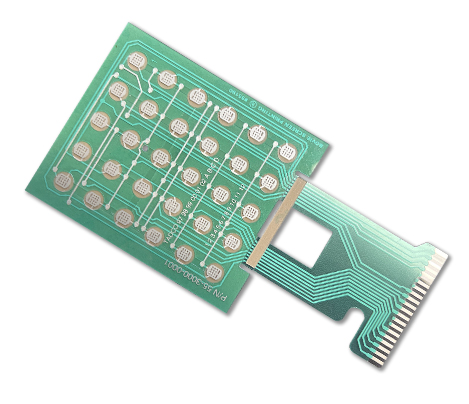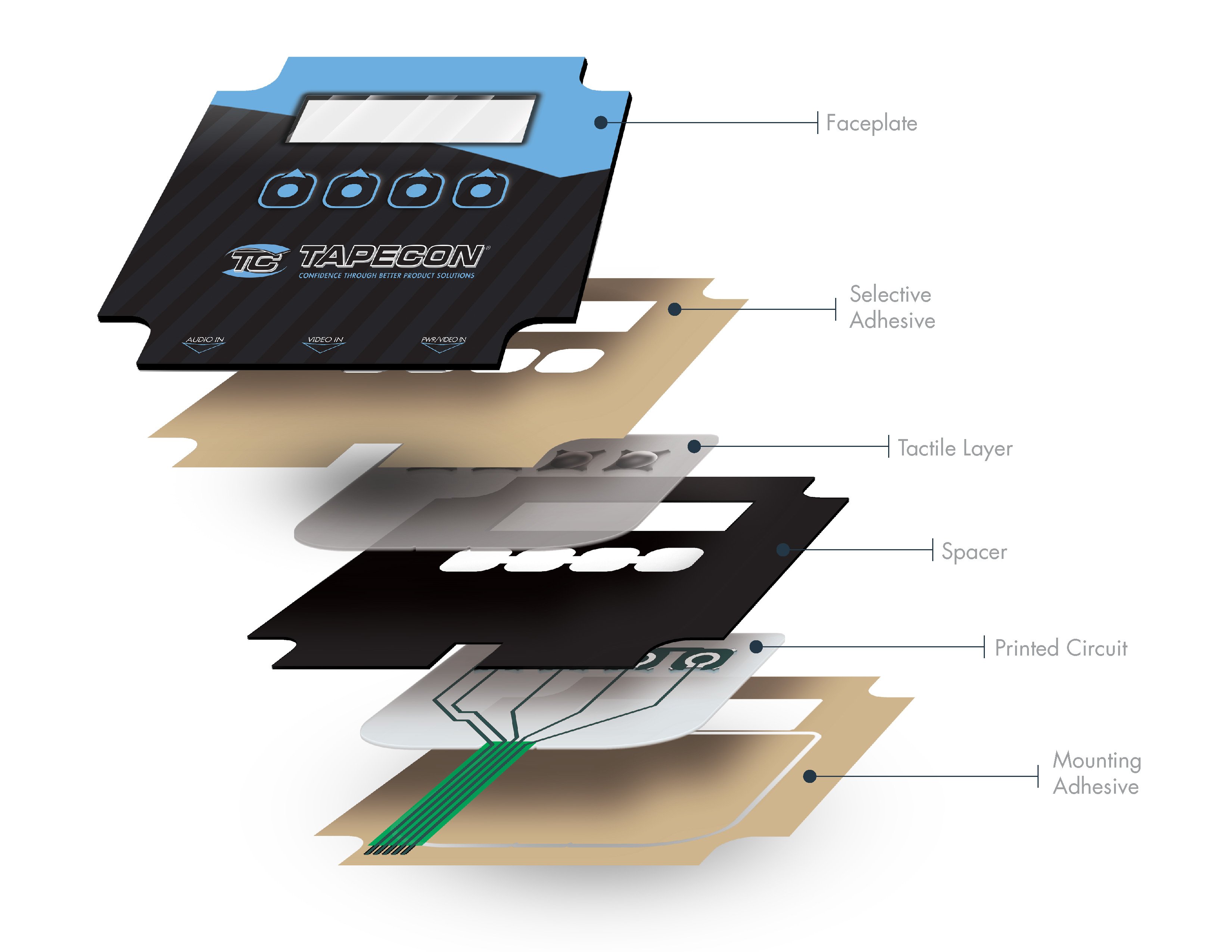The Ultimate Source on Membrane Layer Switches: Layout, Performance, and Applications
Membrane changes offer as a fascinating crossway of style and functionality, playing a crucial function in modern-day customer interfaces throughout different industries. As we explore the varied applications of membrane layer buttons, it comes to be obvious that their flexibility and longevity are critical in environments ranging from medical care to customer electronic devices.

Understanding Membrane Layer Switches
Membrane switches are a kind of user interface modern technology widely used in different digital devices, defined by their slim, versatile style and capability. These switches contain numerous layers that include visuals overlays, adhesive layers, and wiring, enabling a effective and compact interface for customers. They can be located in devices, medical gadgets, and commercial control panels, supplying a trusted approach for individual communication.
One of the main advantages of membrane layer switches is their ability to withstand impurities such as dust and wetness, making them suitable for environments where longevity is necessary. Their low-profile style enables for smooth combination right into different applications, while the customizable graphic overlays enhance customer experience by providing clear visual responses. Furthermore, membrane buttons can accommodate a range of modern technologies, such as responsive feedback and backlighting, further improving their usability.
The manufacturing process for membrane layer switches over generally involves screen die-cutting, lamination, and printing strategies, making certain accuracy and uniformity in manufacturing. In general, membrane layer switches over represent a efficient and functional service for contemporary electronic gadgets, integrating functionality with aesthetic appeal in individual interface style.
Secret Components and Layout Components
A range of key parts and style elements integrated to produce an efficient membrane switch. At the core, the graphic overlay offers both aesthetic and practical functions, providing an easy to use user interface while protecting inner elements from environmental elements. The option of materials, usually polyester or polycarbonate, affects durability and responsive comments.
Under the overlay, the glue layer makes certain the switch adheres firmly to the substrate, which can be plastic, steel, or glass. The spacer layer is important, as it keeps the needed void between the circuit and the overlay layers, permitting effective actuation. Membrane Switches. Circuit traces, usually made from conductive ink or adhesive, are published on a versatile substratum, enabling electrical signals to be transferred when pressure is used
Layout considerations additionally consist of the setup of tactile domes or embossing that provide physical comments to the individual, boosting the total experience. Additionally, the layout and spacing of the buttons should be enhanced for convenience of use, guaranteeing that users can browse the interface intuitively. On the whole, these parts and layout elements function synergistically to develop a reliable, functional membrane switch customized to particular applications.
Functionality and Operation Device
At the heart of efficient performance for membrane switches over lies their operational mechanism, which helps with individual interaction through a basic yet effective helpful hints style. These buttons run on the concept of pressure activation, where a customer uses pressure to a designated area of the button (Membrane Switches). This action compresses the layers of the button, completing an electric circuit that sends a signal to the connected tool
The building and construction typically includes a top visuals layer, a glue spacer layer, and a lower circuit layer, which collectively form a durable interface. When stress is used, the top layer falls down versus the lower circuit layer, enabling conductive traces to attach. This layout not only allows clear responsive comments but likewise ensures durability and integrity, as the switches are commonly immune to dust and dampness.
Moreover, the flexibility of membrane switches over permits assimilation with various innovations, consisting of LED indicators and microcontrollers, improving their performance. By offering a streamlined interface that minimizes mechanical wear, membrane layer switches over stay a favored selection in applications ranging from customer electronic devices to industrial devices, making sure ideal efficiency and customer satisfaction across varied environments.
Sorts Of Membrane Layer Buttons

Another significant group is brightened membrane layer buttons, which incorporate backlighting to boost exposure in low-light problems. These switches are typically made use of in control panels and dashboards where clear exposure is essential.
Additionally, there are custom membrane switches created to satisfy particular dimensional, graphical, and practical requirements. These personalizations can include unique forms, colors, and layouts, enabling seamless combination into different gadgets.

Applications Across Numerous Industries
Exactly how do membrane switches boost functionality throughout diverse markets? In the medical field, membrane buttons play a vital role in devices such as analysis devices and client surveillance systems, where reliability and ease of cleansing are critical.
In the vehicle market, membrane buttons are frequently utilized in control panels and control board, offering intuitive controls that boost driver security and convenience. The consumer electronic devices industry additionally gains from their customizable and light-weight attributes, allowing sleek styles for smart devices and home devices.
Furthermore, membrane buttons find applications in commercial automation, where they add to efficient machinery operation and surveillance systems. Their resistance to dirt and dampness guarantees performance sought after conditions (Membrane Switches). Furthermore, the food and beverage market employs membrane layer buttons for tools control, where hygiene and resilience are critical
Conclusion
In final thought, membrane layer changes represent an important advancement in customer interface modern technology, defined by their special style and find this capability. The convenience of membrane layer changes promotes their application throughout varied industries, from clinical tools to my link consumer electronic devices.
Membrane switches serve as an intriguing intersection of design and capability, playing a crucial function in contemporary individual interfaces throughout numerous markets.Membrane switches are a type of user interface innovation extensively made use of in various electronic devices, defined by their slim, adaptable style and performance.At the heart of reliable functionality for membrane changes lies their functional system, which facilitates customer interaction with a basic yet efficient layout. These switches run on the principle of stress activation, where an individual applies pressure to a marked location of the switch.In conclusion, membrane switches over represent an essential technology in customer interface innovation, defined by their distinct design and functionality.